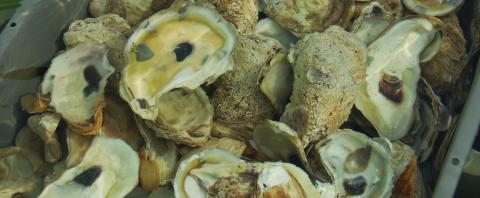
Keeping illness off the half shell
Using genomics testing, researchers discovered a fast, cheap, and effective way to detect a pathogenic strain of bacteria in both raw oysters and humans who consume them. This breakthrough discovery was made possible by a significant equipment investment from our program and the University of New Hampshire. Amid a growing demand for shellfish, the new detection method can be used by food inspectors and oyster sellers, and it provides the basis for a test to diagnose the bacteria in humans.
When eaten raw, oysters can cause vibriosis, an illness that causes gastrointestinal distress and in rare instances may cause a more serious infection in those with weakened immune systems. This can happen when raw oysters are contaminated with a pathogenic strain of a group of bacteria called Vibrio. As our appetite for oysters – particularly in the warm summer months – has increased, and water temperatures have risen due to climate change, incidences of vibriosis have also gone up. Scientists are studying the connection between warmer ocean water, heavy rainstorms, and the increased prevalence of this bacteria in New England.
More Resources
- 2015 UNH Press Release
- Safe Beaches & Shellfish project
